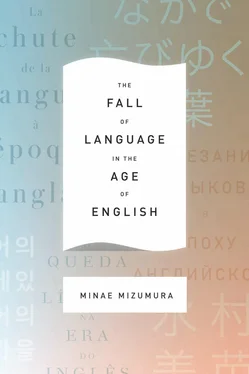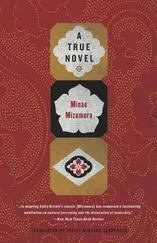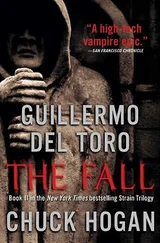3. PEOPLE AROUND THE WORLD WRITING IN EXTERNAL LANGUAGES
1. Benedict Anderson, Imagined Communities: Reflections on the Origin and Spread of Nationalism , rev. ed. (1983; London: Verso, 2006), Kindle ed. Quotations in this chapter are from this work unless otherwise noted.
2. Benedict Anderson, “Global Bases for Early Asian Nationalisms” (lectures presented at Waseda University, Tokyo, April 23, 2005). Slightly edited and revised, based on a transcript provided courtesy of Umemori Naoyuki. Also published in Japanese in Umemori Naoyuki, ed., Benedict Anderson globalization wo kataru (Tokyo: Kōbunsha, 2007).
3. Galileo wrote his later works in Italian, which was one of the first vernaculars to become a “print language.”
4. THE BIRTH OF JAPANESE AS A NATIONAL LANGUAGE
1. Natsume Sōseki, Sanshirō (Amazon Services International, ASIN: B009IXLLU8, 1909), Kindle ed.
2. Higuchi Ichiyō (1872–1896) was one of the first women to write in the Meiji period. Despite her brief life of twenty-four years, her work is revered alongside that of modern Japan’s greatest writers. It is not discussed in this book because her novels are thematically modern yet stylistically premodern. She was trained in writing waka poems, and her prose reflects that tradition; only her final work is written in the genbun itchi style.
3. Helen Craig McCullough, trans., Kokin Wakashū: The First Imperial Anthology of Japanese Poetry (Stanford, Calif.: Stanford University Press, 1985), 20.
4. Uchimura Kanzō, How I Became a Christian (1890; repr., Whitefish, Mont.: Kessinger, 2010), 57.
5. Ibid., 58.
6. Fukuzawa Yukichi, An Encouragement of Learning , trans. David A. Dilworth (Tokyo: Keio University Press, 2012).
7. Fukuzawa Yukichi, The Autobiography of Yukichi Fukuzawa , trans. Eiichi Kiyooka (1966; repr., New York: Columbia University Press, 2007), 206.
8. Ibid., 207.
9. Ibid., 207–8.
10. Katō Shūichi and Maruyama Masao, “Hon’yaku no shisō,” in Nihon kindai shisō taikei (Tokyo: Iwanami Shoten, 1991).
11. Mori Arinori, Education in Japan: A Series of Letters Addressed by Prominent Americans to Arinori Mori (1873; repr., New York: Appleton, 2000), lvi.
12. Fukuzawa, Autobiography , 6. Quotations in this section are from this work.
13. Maruyama Masao and Katō Shūichi, Hon’yaku to Nihon no kindai (Tokyo: Iwanami Shoten, 1998).
5. THE MIRACLE OF MODERN JAPANESE LITERATURE
1. Natsume Sōseki, Sanshirō (Amazon Services International, ASIN: B009IXLLU8, 1909), Kindle ed. Quotations in this chapter are from this work unless otherwise noted.
2. Natsume Sōseki, Theory of Literature , trans. Joseph A. Murphy, in Theory of Literature and Other Critical Writings , ed. Michael K. Bourdaghs, Atsuko Ueda, and Joseph A. Murphy (New York: Columbia University Press, 2012), Kindle ed.
3. Sōseki, “My Individualism,” trans. Jay Rubin, in ibid.
4. Sōseki, preface to Theory of Literature , trans. Michael K. Bourdaghs, in ibid.
5. Ibid.
6. Natsume Sōseki, Shokanshū , ed. Komiya Hōryū, Sōseki zenshū 28 (1956; Tokyo: Iwanami Shoten, 1980), 209.
7. Natsume Sōseki, “Gendai Nihon no kaika” (Amazon Services International, ASIN: B009IXK2EO, 1911), Kindle ed.
8. Hori Keiko, “‘Konjiki yasha’ ni okeru hon’anteki sokumen,” in Ozaki Kōyō shū , Shin Nihon koten bungaku taikei: Meiji hen 19, Geppō (Monthly report) (Tokyo: Iwanami Shoten, 2003).
6. ENGLISH AND NATIONAL LANGUAGES IN THE INTERNET AGE
1. Natsume Sōseki, “Gifu e no tegami,” in Shokanshū , ed. Komiya Hōryū, Sōseki zenshū 27 (Tokyo: Iwanami Shoten, 1956), 168.
2. Terada Torahiko, “Natsume Sōseki sensei no tsuioku” (Amazon Services International, ASIN: B009AJFLHY, 1948), Kindle ed.
7. THE FUTURE OF NATIONAL LANGUAGES
1. Ngũgĩ Wa Thiong’o, “Decolonising the Mind,” in The Norton Anthology of English Literature , vol. F, The Twentieth Century and After , 8th ed., ed. Stephen Greenblatt, M. H. Abrams, Jahan Ramazani, and Jon Stallworthy (1986; New York: Norton, 2005), 2537.
2. In 2001, the Ministry of Education was renamed the Ministry of Education, Culture, Sports, Science and Technology.
3. Atsuji Tetsuji, Sengo Nihon kanjishi (Tokyo: Shinchōsha, 2010), 39–51.
4. Fukuda Tsuneari, Watashi no kokugo kyōshitsu (1960; Tokyo: Shinchōsha, 1961), 312.
5. Ibid.
6. Kawai Hayao, “Kokusai shakai de fukaketsu na ‘shudan,’” in Ronsō: Eigo ga kōyōgo ni naru hi (Tokyo: Chūkō Shinsho Rakure, 2002), 51.
7. Sakaguchi Ango, Nihon bunka shikan (1943; Tokyo: Kōdansha, ASIN: B00J9Y95U4, 1996), Kindle ed.
8. I Yeonsuk, Kokugo to iu shisō: Kindai Nihon no gengo ninshiki (Tokyo: Iwanami Shoten, 1996), 251.
9. Ibid., 313.
10. Funabashi Yōichi, Aete Eigo kōyōgo ron (Tokyo: Bungei Shunjū, 2000).
11. Hagiwara Sakutarō, “Ryojō” (On a journey), in Junjō shōkyokushū (Amazon Services International, ASIN: B009IY9L0Y, 1925), Kindle ed.
I have kept the Selected Bibliography concise because this is not a book of scholarship in the usual sense of the term. I am indebted to all the books I have had the good fortune to encounter in my life, from the children’s books I returned to again and again for pleasure to the tomes on literary theory I struggled through but now look back on with a sense of gratitude mixed with nostalgia.
Anderson, Benedict. “Global Bases for Early Asian Nationalisms.” Lectures presented at Waseda University, Tokyo, April 23, 2005. [Also published in Japanese in Naoyuki Umemori, ed., Benedict Anderson globalization wo kataru . Tokyo: Kōbunsha, 2007.]
. Imagined Communities: Reflections on the Origin and Spread of Nationalism . Rev. ed. London: Verso, 2006. Kindle ed.
Atsuji Tetsuji. Sengo Nihon kanji shi . Tokyo: Shinchōsha, 2010.
Fukuda Tsuneari. Watashi no kokugo kyōshitsu . 1960. Tokyo: Shinchōsha, 1961.
Fukuzawa Yukichi. The Autobiography of Yukichi Fukuzawa . Translated by Eiichi Kiyooka. 1966. Reprint, New York: Columbia University Press, 2007.
Funabashi Yōichi. Aete Eigo kōyōgo ron . Tokyo: Bungei Shunjū, 2000.
I Yeonsuk. Kokugo to iu shisō: Kindai Nihon no gengo ninshiki . Tokyo: Iwanami Shoten, 1996.
Katō Shūichi and Maruyama Masao. “Hon’yaku no shisō.” In Nihon kindai shisō taikei . Tokyo: Iwanami Shoten, 1991.
Kin Bunkyō. Kanbun to higashi Asia . Tokyo: Iwanami Shoten, 2010.
Maruyama Masao and Katō Shūichi. Hon’yaku to Nihon no kindai . Tokyo: Iwanami Shoten, 1998.
Natsume Sōseki. “Gendai Nihon no kaika.” Amazon Services International, ASIN: B009IXK2EO, 1911. Kindle ed.
. Sanshirō . Amazon Services International, ASIN: B009IXLLU8, 1909. Kindle ed.
. Shokanshū . Edited by Komiya Hōryū. Sōseki zenshū 28. 1956. Tokyo: Iwanami Shoten, 1980.
. Theory of Literature and Other Critical Writings . Edited by Michael K. Bourdaghs, Atsuko Ueda, and Joseph A. Murphy. New York: Columbia University Press, 2012. Kindle ed.
Shinada Yoshikazu. “Kokumin kashū toshite no ‘Man’yōshū.’” In Sōzōsareta koten: Canon keisei, kokumin kokka, Nihon bungaku , edited by Haruo Shirane and Suzuki Tomi. Tokyo: Shin’yōsha, 1999.
Suzuki Yoshisato and Chūko Shinsho Rakure Henshūbu, eds. Ronsō: Eigo ga kōyōgo ni naru hi . Tokyo: Chūo Kōrōn Shinsha, 2002.
Читать дальше












